Mana Pools National Park: Magic of Zimbabwe
Mana Pools National Park is nestled along the banks of the Zambezi River in northern Zimbabwe. Designated as a UNESCO World Heritage site, its sprawling floodplains, majestic riverine forests, and abundance of wildlife create an unparalleled setting for both landscape and wildlife photography. In late August and early September, when the dry season is in full swing, this natural wonder transforms into a stage where animals congregate near dwindling water sources, providing perfect opportunities for capturing the raw beauty of the African wilderness.
With the help of knowledgeable guides, we were able to see many different scenes of this magical place. Elephants, water buffalo, impala, baboons, zebras, and fish eagles were all seen daily and in high numbers.
During the early part of September this year, I was fortunate to stay at two Machabe Safari Lodges. This company offers a collection of comfortable accommodations that blend seamlessly into the surrounding environment. With prime locations near the Zambezi River, Ingwe Pan and Mana River Camp created the ideal base for our photographic adventures. We literally had elephants walking through our camp, slowly lumbering along focused on reaching for snacks in the trees.
The Landscape: A Photographer’s Canvas
A sunset backlights a tree in Mana Pools National Park.
Fujifilm X-H2 | FUJINON XF 16-55mm F2.8 R LM WR
Mana Pools is a place where light and shadow play across vast floodplains, ancient baobabs rise from the earth like sentinels, and the tranquil waters of the Zambezi reflect the skies above. For landscape photographers, the park offers endless possibilities.
One of the most striking features of Mana Pools is the interplay of light, particularly in the early mornings and late afternoons. The golden hour here is a magical time when the soft light brings out the textures of the land—illuminating the pale barks of the Winterthorn trees and casting long shadows across the dry earth. Capturing these moments required both patience and the right gear, including wide angle and telephoto lenses to be prepared for any special moment.
Dramatic sunset next to the Zambezi River in Zimbabwe.
Fujifilm X-H2 | FUJINON XF 70-300mm F4-5.6 R LM OIS WR
Wildlife: The Heart of Mana Pools
Mana Pools is famous for its large populations of elephants, lions, buffalo, and hippos, among many other species. In August and September, as the water sources shrink, the animals are drawn to the riverbanks, offering an almost guaranteed spectacle for wildlife photographers.
The elephants in Mana Pools are particularly photogenic. Known for standing on their hind legs to reach the higher branches of acacia trees, these majestic creatures provided us with numerous opportunities to capture their intelligence and grace. Shooting with a telephoto lens, we could frame their interactions in intimate detail, while still showing the environment that is so essential to their existence.
An elephant slowly lumbers along the Mighty Zambezi River at sunset in Mana Pools National Park.
An elephant stands on hind legs in this rare behavior specific to Zimbabwe.
Elephant walking among the tall trees of Mana Pools.
A baby elephant looks onward, studying these strangers in their home.
Predators like lions are often found lounging in the shade during the heat of the day. Capturing these powerful cats required patience, waiting for moments when they moved from their slumber or interacted with one another. Getting these shots requires zoom lenses for distant captures, but incorporating the surrounding terrain helps tell the story of the hunt.
One of the best ways to encounter wildlife in Mana Pools is on foot. Unlike many African parks, walking safaris are allowed here, offering an intimate experience with nature. Accompanied by our experienced guides, we tracked wild dogs and elephants, always maintaining a safe distance, but getting close enough to photograph their behaviors. This immersive approach allowed us to focus on smaller animals too—such as impalas, baboons, and birds—that are often overlooked on vehicle safaris.
A lion cub breathing heavily after a big meal in Zimbabwe.
Wild dogs relaxing in the late afternoon, Mana Pools National Park.
Photography Techniques and Tips
1. Gear: It’s essential to be prepared with the right equipment when photographing in Mana Pools. A combination of lenses is recommended—a wide-angle (24-70mm) for landscapes and a telephoto (100-400mm) for capturing wildlife at a distance.
Don’t worry about having a 600 or even 500mm lens. 300-400 I found was plenty in order to include the magical surrounding environment of Mana Pools. The trees and colors of this park add so much to the photographs you will capture.
2. Light and Timing: Timing is everything in Mana Pools. The best light occurs during the golden hours—just after sunrise and before sunset. During these times, the landscape comes alive with warm hues, and the low angle of the sun creates long shadows that enhance depth in your compositions. Wildlife is also more active in the early morning and late afternoon, making it the best time to photograph animals in action.
3. Composition: When photographing wildlife, try to incorporate the environment into your shots. Rather than zooming in too close, pull back slightly to show the animal in its natural habitat. Framing an elephant against the sprawling floodplains or a lion resting under a massive tree tells a richer story about their connection to the land.
4. Patience: One of the key ingredients to successful wildlife photography is patience. Observing animal behavior and waiting for the right moment can lead to more dynamic and engaging images. Whether it’s waiting for a predator to make a move or for the perfect light to hit the landscape, the rewards of being patient are worth it.
5. Walking Safaris: If you’re looking to capture intimate moments with wildlife, consider a walking safari. These walks allow for close encounters with animals and offer a unique vantage point, especially for shooting smaller creatures like birds, insects, or even the incredible textures of ancient tree bark.
Getting low is key for that beautiful soft foreground. I found myself laying flat on the dirt to get that perfect vantage point.
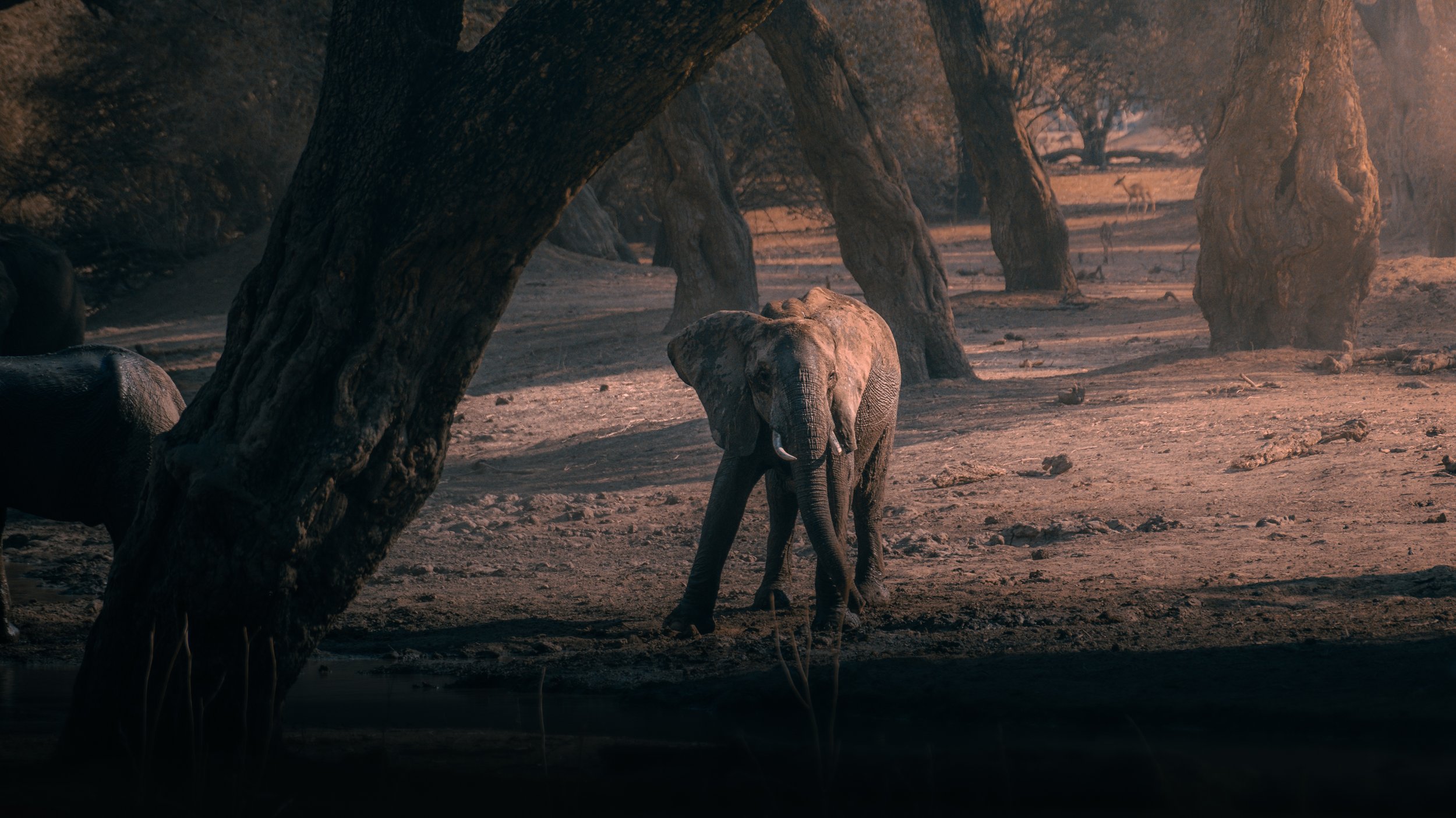
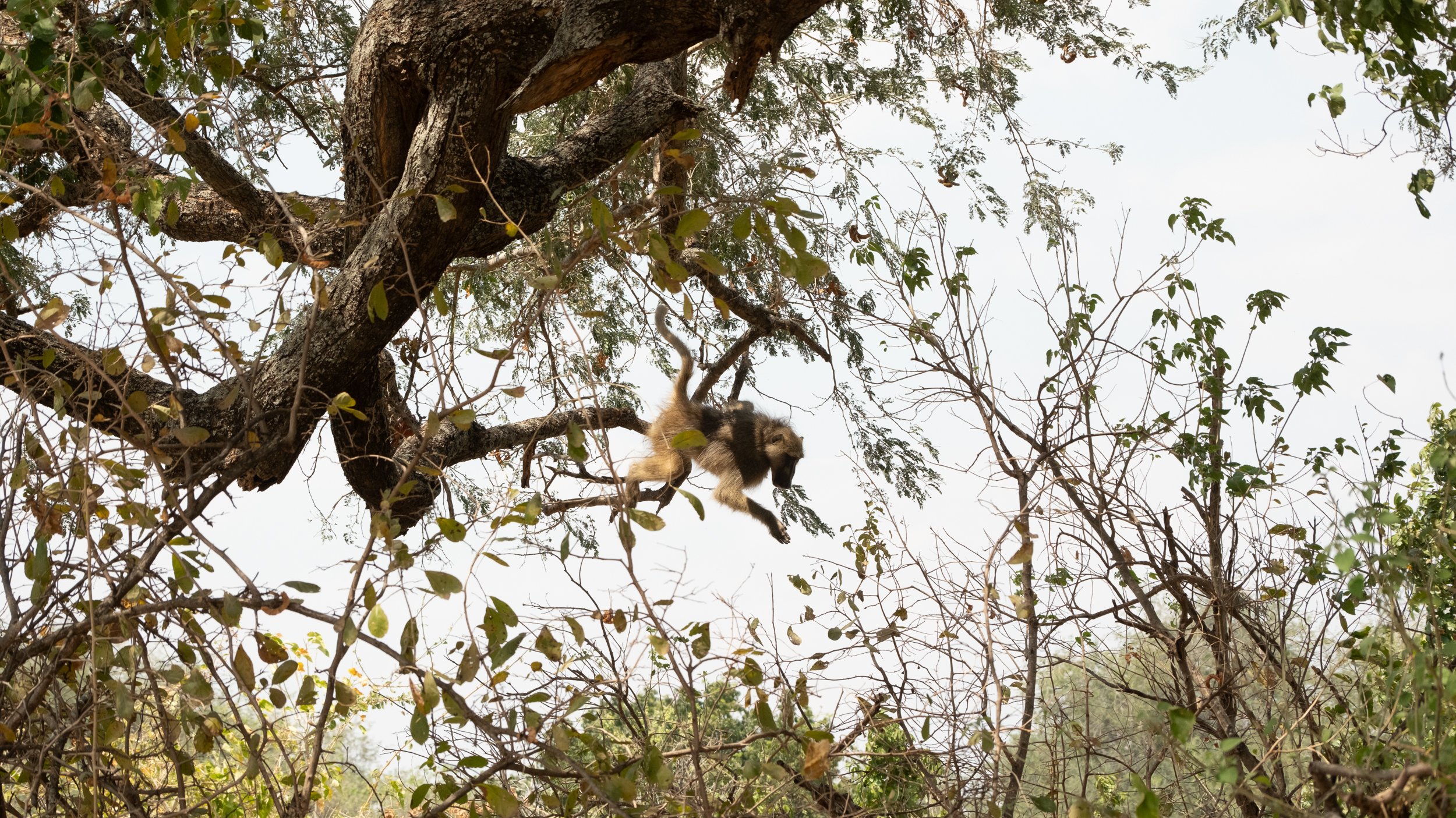
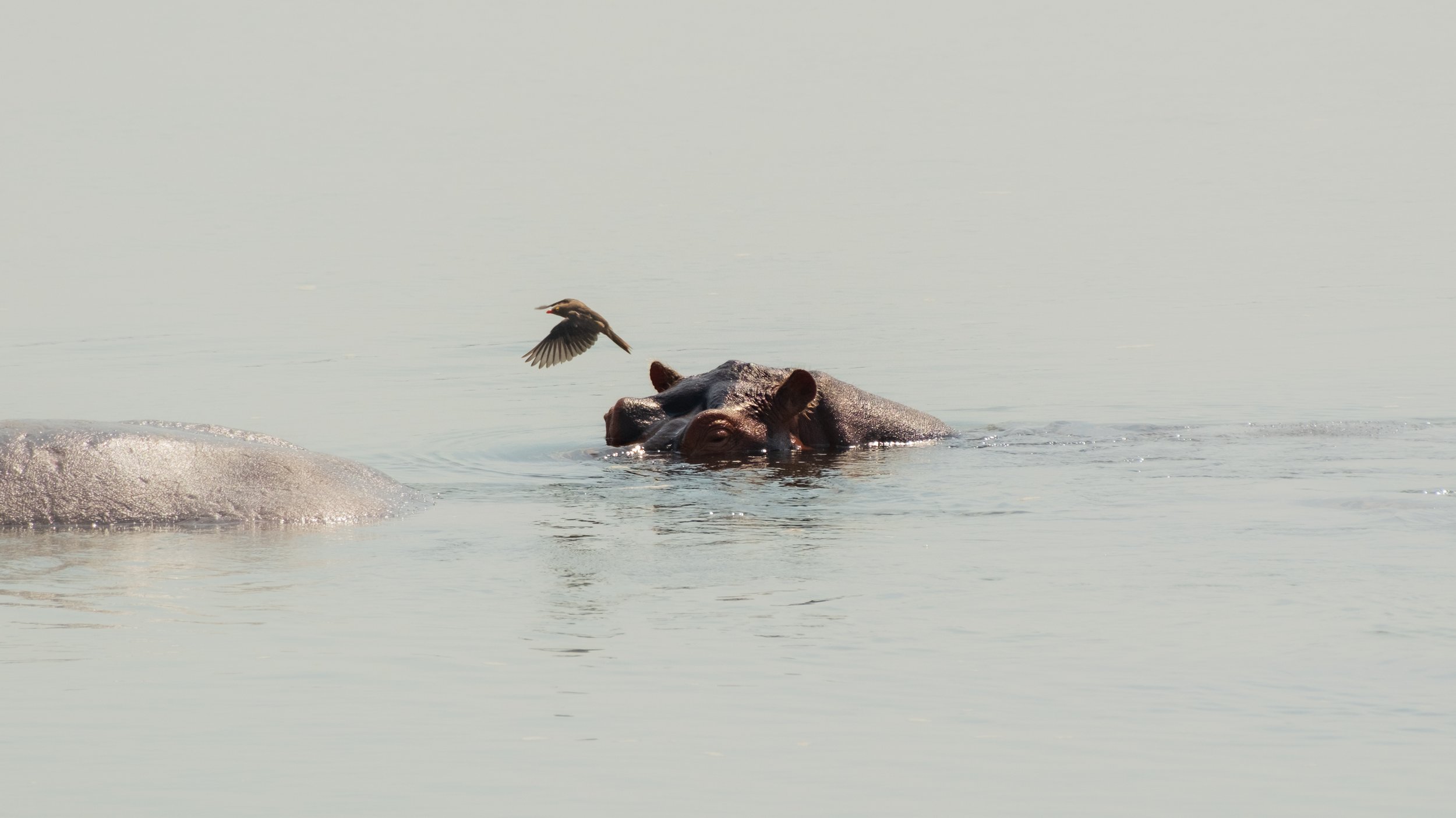
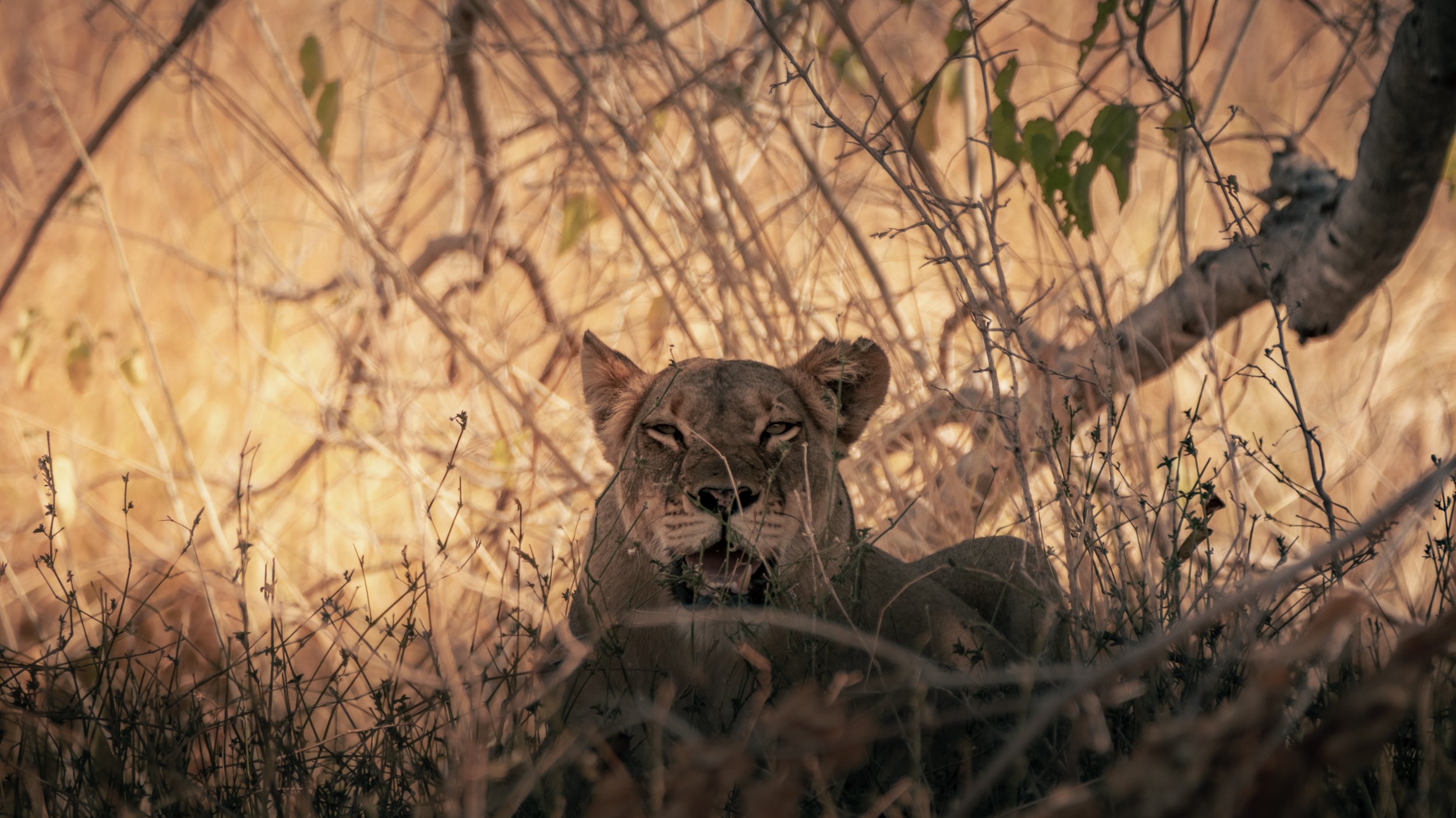
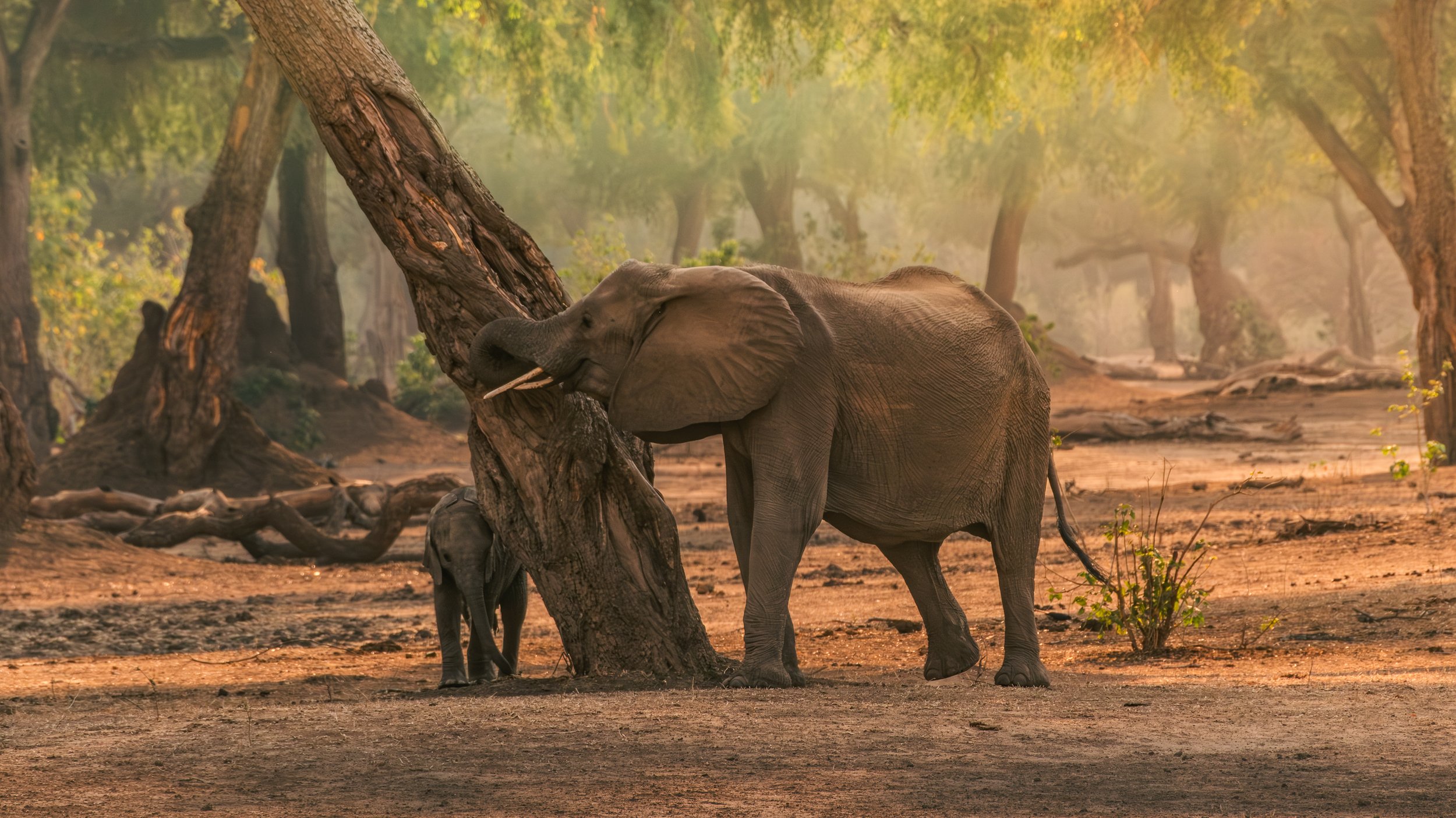
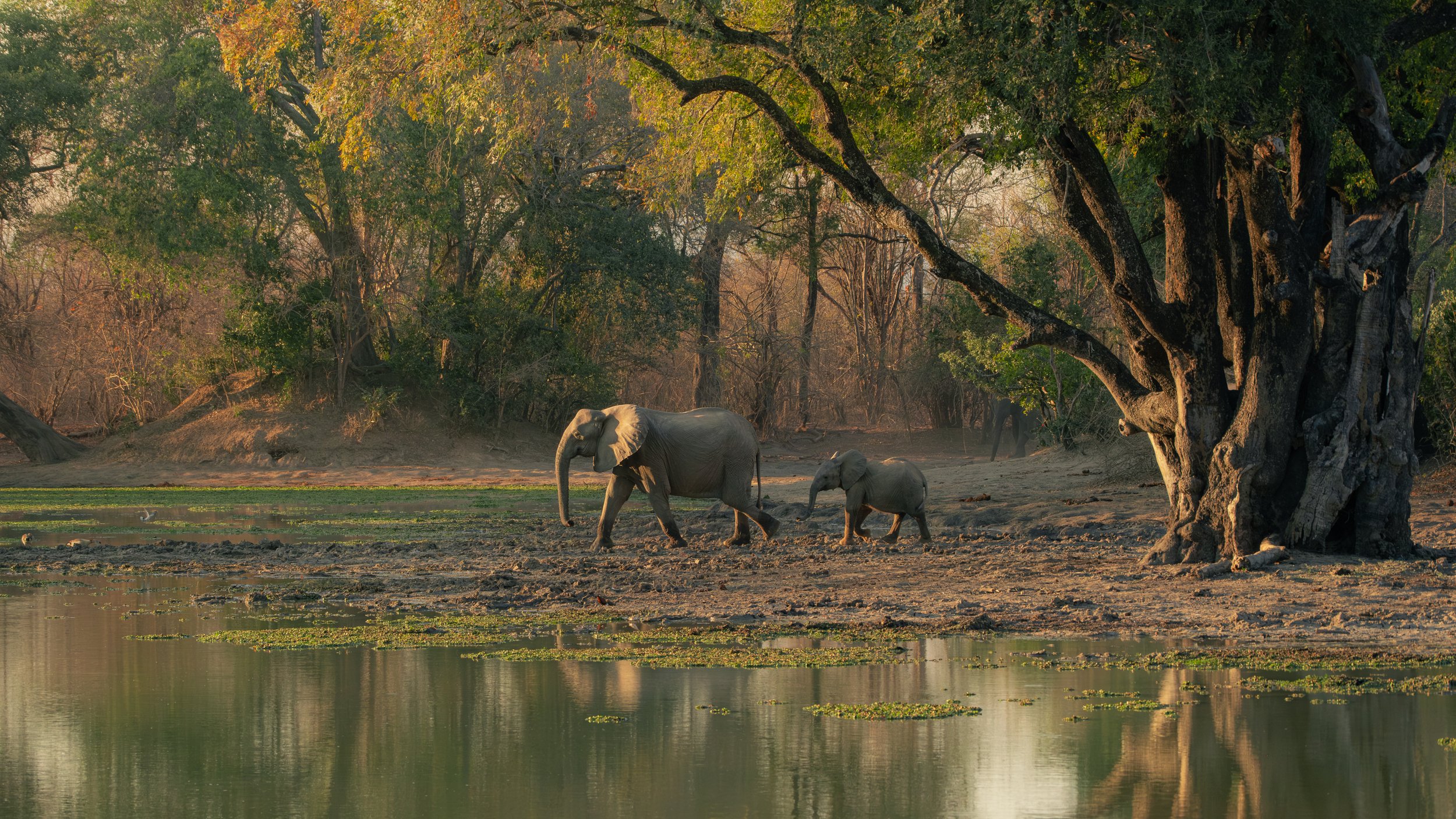
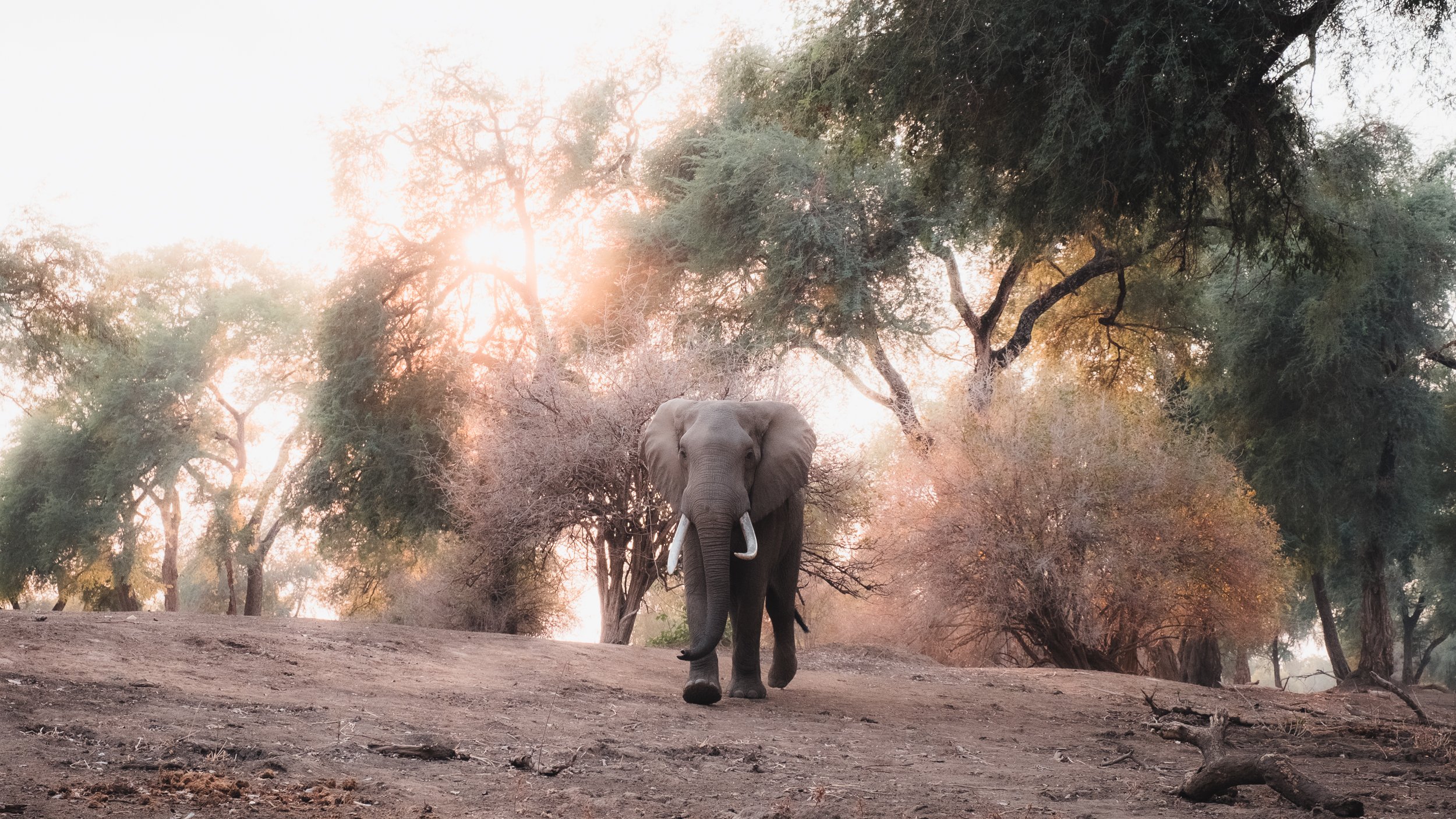
Boswell: The Iconic Elephant of Mana Pools
One of the most famous residents of Mana Pools National Park is Boswell, an extraordinary elephant renowned for his unique ability to stand on his hind legs to reach high branches for food. While elephants are typically known for using their trunks to forage from the ground or low-hanging branches, Boswell has mastered a remarkable technique, standing upright to access acacia pods and leaves that are out of reach for other elephants. This behavior not only makes him a favorite among visitors but also a fascinating subject for photographers.
Boswell reaches for food at sunset next to the Mighty Zambezi River
Capturing Boswell in action requires both patience and preparation. This behavior is relatively rare in the animal kingdom, and seeing it in the wild is a privilege. Equipped with a long zoom lens, you can capture the full scope of his upright stance, highlighting his massive size as he reaches for the high branches. Framing him against Mana Pools’ open floodplains or the backdrop of towering winterthorn trees adds context to the scene, emphasizing the unique connection between this elephant and his environment.
The best time to spot Boswell is during the dry season, particularly in late August, when the scarcity of food on the ground drives him to forage higher up. The soft, golden light during the early morning or late afternoon enhances the scene, casting dramatic shadows that accentuate his towering form as he balances on two legs.
Photographing Boswell is more than just capturing an iconic elephant—it's about documenting a rare behavior that showcases the intelligence and adaptability of these magnificent creatures. For any wildlife photographer visiting Mana Pools, witnessing and photographing Boswell in action is a once-in-a-lifetime experience that adds a unique and memorable shot to any portfolio.
Photography Tours by Solly Levi : https://www.sollylevi.com/
I cannot recommend Solly enough. I have been on his Namibia tour and now this Mana Pools trip. He knows the areas so well and makes sure the lodges are comfortable and the destinations are exciting.









